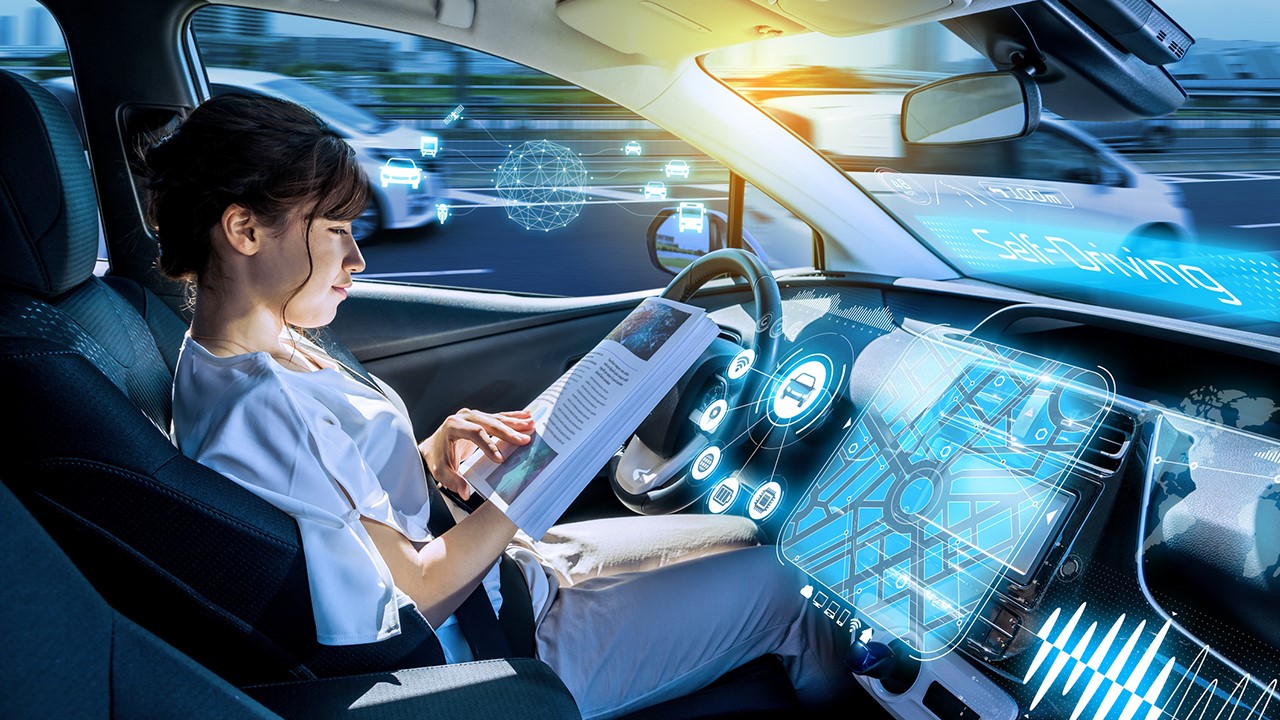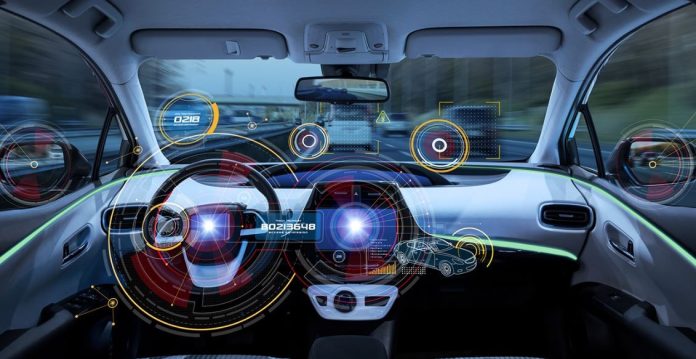5G technology in automotive applications is on a rising trajectory today, with the advance of in-vehicle technologies, IoT innovations and the deployment of high-speed networks. There are some critical reasons for the development of these technologies and why the 5G car may be coming soon.
The research might surprise you. How often do vehicle-related problems such as flat tires, steering failures or brake failures cause traffic and highway accidents? According to research by U.S. DOT (United States Department of Transportation), about 94% of all car crashes are caused by human error. Just 2% of accidents happen as the result of mechanical failure. Breaking down the data further, we find that one in four deaths can be attributed to speeding. The statistics are startling, indicating that a quarter of all driving-related fatalities and most traffic accidents are entirely preventable. Connected vehicles will therefore be a game changer for traffic safety.
Preventable accidents are the bad news. The good news is that we’re finally in a position to do something about it. The deployment of 5G cellular networks and other new technologies are promising to make self-driving cars a reality, and it’s happening faster than most people think. In this article we’ll look at how cities are adapting to enable connected vehicle technoloyg and autonomous driving, what the technology looks like and when we might see the rollout of the first self-driving cars. Let’s explore the future of 5G, IoT and automotive applications.
Connected vs. Autonomous Vehicles: How Are They Different?

It’s important to distinguish between a connected vehicle and an autonomous vehicle. A connected vehicle is one that can receive information from an outside source and/or connect with a consumer’s cellphone. Connected vehicles are already common today. For example, a car’s navigation system is connected to the GPS network. In the event of traffic or other disruptions on the road, the navigation system can plan a new route to avoid these obstacles.
The next phase of connected vehicle will be advances in V2X, where X may be a pedestrian or a traffic management system in an intersection. Also known as vehicle-to-everything, V2X is the ultimate connected vehicle advance that will support automated braking of vehicles to prevent traffic accidents.
OnStar is another good example of a connected vehicle. In the event of an emergency, the driver can connect to a help center which can send out a tow truck or dispatch emergency services. In terms of cellphone connection, many car manufacturers already allow drivers to sync their cellphone to the car in order to use apps, play music or enable voice recognition.
While OnStar and GPS are helpful services, they rely on technologies that are decades old. Even connecting a smart phone to a car’s dashboard isn’t that exciting in the grand scheme of things. The next generation of connected vehicles are going to do so much more. 5G cars will connect to 5G networks, which will not only enable ultra-fast, low-latency communications, it will also allow them to communicate with each other. For example, two 5G connected cars coming to a stop sign can agree in advance who will go through first, solving the problem that under current technology, self-driving cars tend to perform poorly at stop signs.
As we can see, a connected vehicle is not necessarily an autonomous vehicle. Connected vehicle technology refers to V2X advances. An autonomous vehicle is the next step, where the car does the driving, and it will ultimately rely on the integration of 5G technology in automotive systems. Some of the very first self-driving cars were not connected vehicles. They relied on radar and planned routes to navigate the roads. However, going forward most self-driving cars will be connected as there is a myriad of benefits for a relatively small cost.
Today’s Technology is Enabling the Future of Autonomous Vehicles

The promise of fully autonomous vehicles requires a high-speed 5G connection for thousands of cars, simultaneously, in a city center. While 4G is an enormous enhancement over 3G and is well-suited to most IoT applications today, true autonomous vehicles requires higher bandwidth and lower latency. To that end, many cities in America, especially larger cities like Los Angeles and New York, are expanding their 5G coverage. While these networks are not always installed to benefit autonomous vehicles in particular, 5G cars will be able to link into the new networks and take advantage of this infrastructure.
Intelligent Speed Assist (ISA) is an interesting technology that’s likely to play a part in the development of the autonomous vehicle. With ISA, a GPS system determines the vehicle’s speed and then cross-references that to a map with known speed limits. In the event that the car is exceeding the speed limit, the ISA system can warn the driver or possibly (depending on how ISA is set up), even slow the vehicle down. In terms of autonomous vehicles, a map with speed limits incorporated into it will be essential. While machine learning and AI will enable self-driving cars to read speed limit signs, the signs may not be prevalent enough to keep the vehicle informed. Some small towns have very few signs, and in other places signs may be disfigured or missing.
Another interesting technology that’s already being used in today’s cars, like BMW, is lane assist. A car can use GPS data, cameras and/or radar to determine the vehicle’s location on the road and keep it in the appropriate lane. This technology will continue to be refined and will one day lead to an autonomous car that can stay in its lane at any speed and in any driving condition. Fully developed lane assist driving will make cruise control look like a well-trained horse that always trots at the same speed.
In the meantime, as the pieces fall into place for integration of 5G in automotive applications, connected vehicle technology is being deployed today. As described in the blog post, What Is Connected Vehicle Technology and What Are the Use Cases, Digi is working with departments of transportation and Intelligent Transportation Systems (ITS) groups to install the mission critical communications infrastructure for connected vehicles today, so that smart cities are prepared for tomorrow.

How 5G Will Enable Autonomous Driving
As we’ve discussed, one of the key features of 5G is that it will allow cars to communicate with each other. This will open up the possibility of data sharing, from current speed and destination to previous road conditions. A car heading in one direction will automatically share data with a car heading in the opposite direction.
Cars will coordinate at stoplights and stop signs. Drivers running red lights will become a thing of the past. In the long term, several decades down the line, we could find that stoplights and stop signs are eliminated altogether as driverless cars can coordinate their actions without a sign or signal. Traffic jams will be reduced or eliminated as self-driving cars can drive in closer proximity to each other. Also, autonomous cars don’t slow down to rubberneck.
5G cars will also pick up on the signals being sent by 5G phones in pedestrians’ pockets. This will be one way that autonomous cars can avoid hitting people at crosswalks or intersections. Even in the event where a car’s radar and cameras can’t detect a person, they’ll detect the signal coming from their phone. 5G-enabled autonomous cars will also be able to connect to a city’s smart grid network in order to locate available parking, access services and other benefits we may not have imagined yet. For example, maybe school buses, construction vehicles and ambulances will broadcast their locations so that self-driving cars can redirect their course.
5G Vehicles are Coming, but When?

As we’ve established, a key part of enabling autonomous driving is the buildout of the 5G network. One of the side effects of the Corona virus is that more people are working from home and the demand for bandwidth has increased correspondingly. Verizon, for example, noted a 75% increase in bandwidth usage. This huge demand spike could lead to 5G being built out significantly faster than it might otherwise have been. Such a build out will lay the groundwork for autonomous vehicles.
In terms of actual numbers, Business Insider estimates that there will be 77 million connected cars produced by 2025. For fully autonomous or semi-autonomous vehicles, the number is 14 million by 2025. While that may not sound like a lot, it’s important to note that once the technology becomes reliable and inexpensive it could take off in a big way. Market growth from 14 million to 100 million could take the same amount of time as it took to go from 1 to 14 million.
GM is already hard at work developing autonomous vehicle technology. In 2016 they spent more than $1 billion to acquire Cruise Automation, a self-driving car startup. Since then Cruise has raised additional capital and GM appears fully committed to making the self-driving car a reality.
The transition to self-driving cars won’t happen overnight; it will be gradual. We already have lane assist and other technologies designed to take over control of the car in the specific circumstances where it can save lives.
Over time these technologies will improve, new technologies will be introduced and gradually cars will do more and more of the driving. At some point there will be a car produced without a steering wheel. There may be restrictions. For example, it may only be able to operate in certain cities or during clear days. But the car without a steering wheel will be a sign that we’re getting close to a fully autonomous future.









